When purchasing and cooking supplies, measurements are emphasized, and it’s important that you take note of them. Purchasing a product that is the wrong size can be a waste of money. When planning on buying a frying pan, it’s important to know how to measure a frying pan.
Points in Measuring A Frying Pan
Some may think that measuring your pans is not necessary, but when you want to find the perfect pan for your requirements, it becomes an important step. Important measurements usually include the height and diameter of the pan.
Although pan sizes do not really differ in significant amounts, it will still be useful to know how to measure them just in case you need an accurate size for your planned purchase.
Diameter or the upper inner diameter
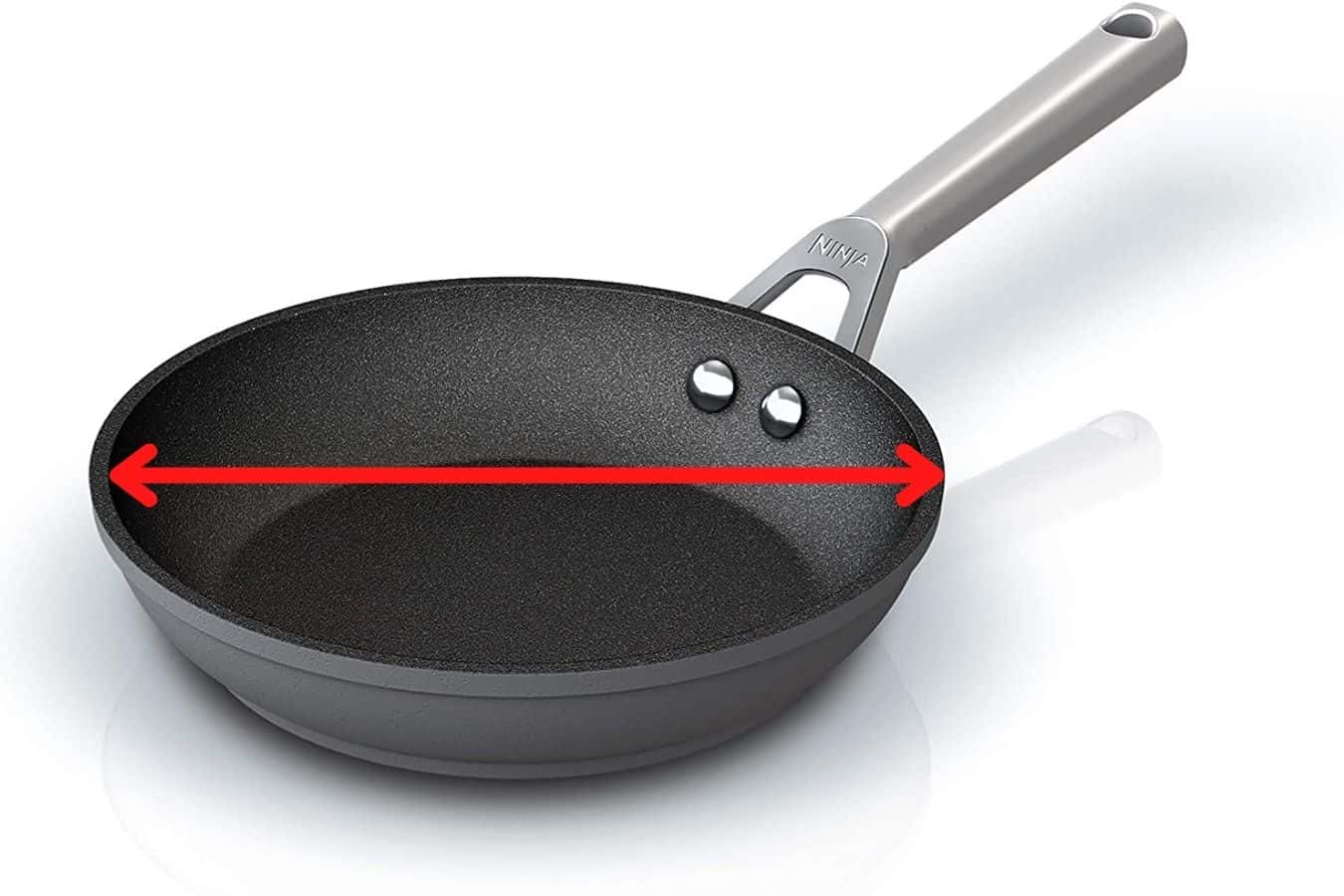
This is the most important specification when you are measuring pans. In fact, this is also the most important specification for other cookware such as pots. This location refers to the upper inner diameter, which is the opening of the pan, starting from the inside edge. The overall diameter of the pan can be influenced by the thickness of the pan’s edges, so it’s not a reliable metric for categorizing pans.
Base diameter
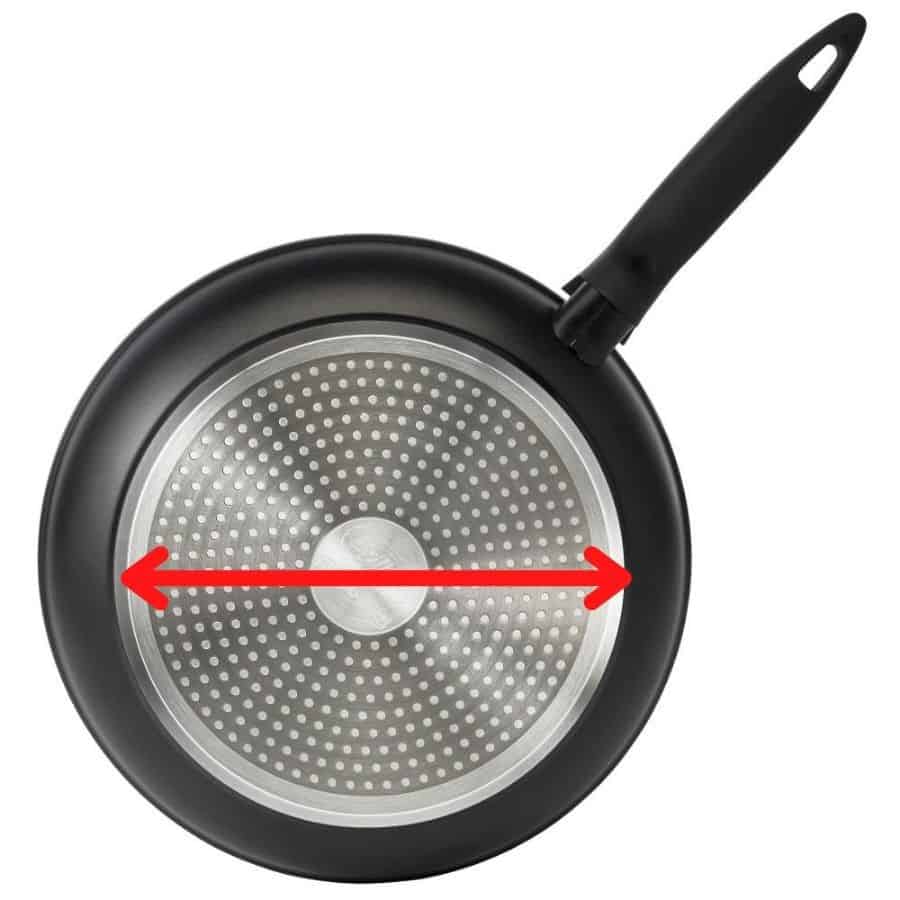
Frying pans with the same diameter can differ in frying surfaces. The frying surface of the pan is the flat bottom surface of the pan, excluding the start of the curved pan wall.
Common sizes
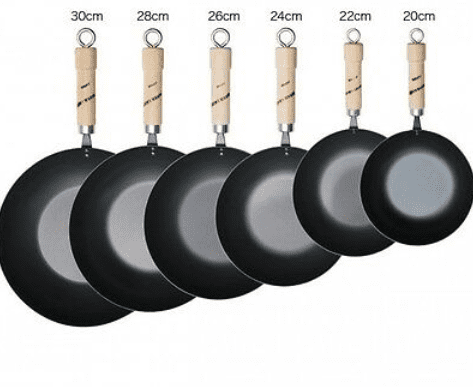
Although there is a wide range of frying pan sizes to choose from, these are the most common sizes available on the market. These sizes are marked “common” because of the sales as well as the demand for them.
The most common sizes today are 16, 20, 24, 28, and 32 cm. The common sizes really depend on the area of the scope of the market. In some places, sizes of 14, 22, 26, and 30 cm are also used.
Shapes
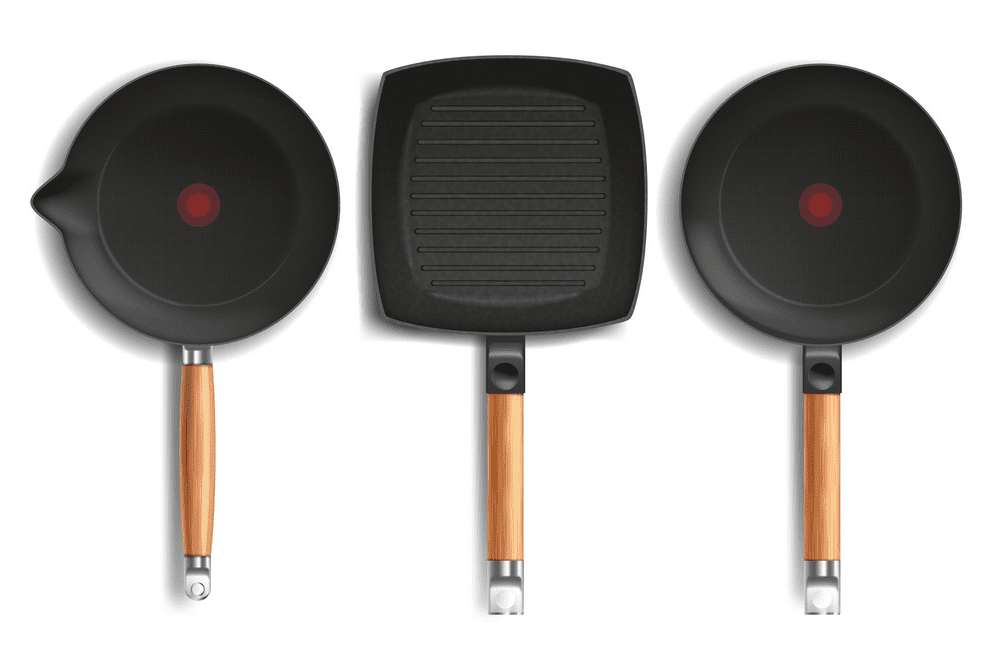
Frying pans are not only limited to the circle shape; there are also square pans available on the market. In this case, what is the usual size specification to take note of? For square frying pans, there are two lengths to take note of. After noting these two lengths, it’s time to multiply them by each other, and you get the overall “size” of the pan.
How to Measure a Frying Pan
Measurement has become more and more emphasized in the things available on the market. Sizes can either be very essential or skippable when it comes to a lot of things available on the market.
However, for cooking, measuring portions is very important, especially in the cooking process itself. One ingredient or seasoning gone wrong can get the whole meal into chaos. In terms of cooking equipment, the right size should be used to save space, accommodate the amount of the dish and many more.
In measuring a frying pan, things can be done as simply as preparing a ruler or measuring tape. The overall size of a round pan is usually defined by the longest dimension and, in this case, the lip-to-lip measurement of the pan.
Steps:
- Prepare the frying pan and place it flatly on a flat surface to avoid wiggling and wobbling. The frying pan should be facing up as you will measure the top side of the pan.
- If you choose to use a measuring tape, stretch it. Measure from the edge to the edge of the round mouth. Make sure to measure the widest part, which means the center of the circle mouth.
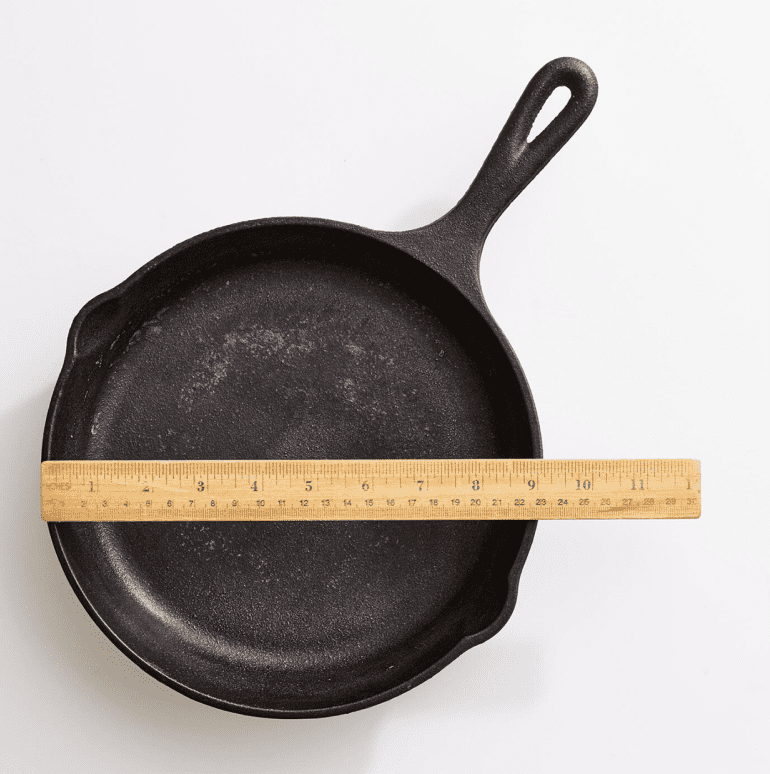
Measuring square-shaped frying pans
When measuring square pans, the same method should be used. However, this time, you’ll have to measure two points. You need to measure across at the longest part of the middle. Then measure the other longest point, so the places of measurement should form a cross. Then all you need to do is multiply the two measurements, e.g., 32 x 32 cm.
Measuring oval-shaped frying pans
Oval pans can be tricky as it can be confusing where exactly to start measuring. Measuring oval frying pans basically works like how you measure square pans, by measuring the widest part (middle) and across the middle of the shorter side. So, when you measure an oval frying pan’s longer side at 36 cm and the shorter side at 22 cm, the pan’s measurement would be declared as 36 x 22 cm.
Frying Pans and Other Measurements
Height
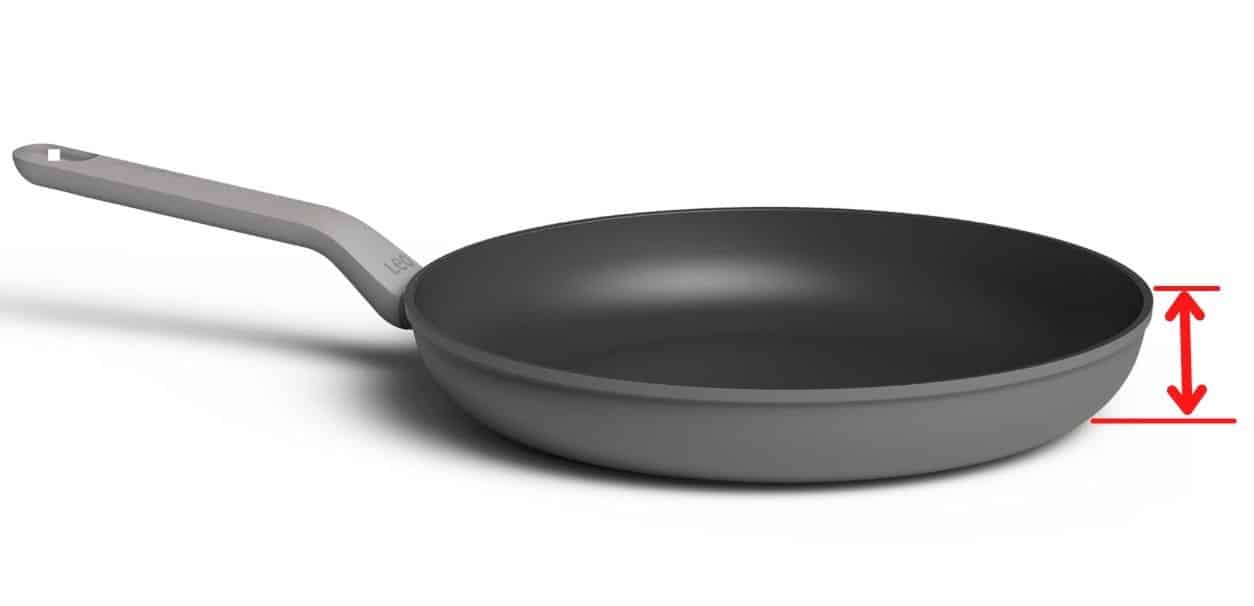
Some people require a certain height measurement for their frying pans. This can be connected to the type of dish they will be cooking but nevertheless, it’s useful to learn how to measure the height of your frying pan.
When measuring your frying pan’s height, you do not need to take into account the lids and handles. All you would basically need is the overall height and, most importantly, the inner height, or in other words, how deep the pan is. The easiest way to do this is to start from the edge and bring any part of the round mouth down to the base, at the edge, just where the curve for the walls starts.
You may also want to measure just the height of the “cooking part” or exactly how deep the inside of the pan is. To do this, you may measure the thickness of the base of the pan and then subtract it from the overall height measured earlier.
Capacity
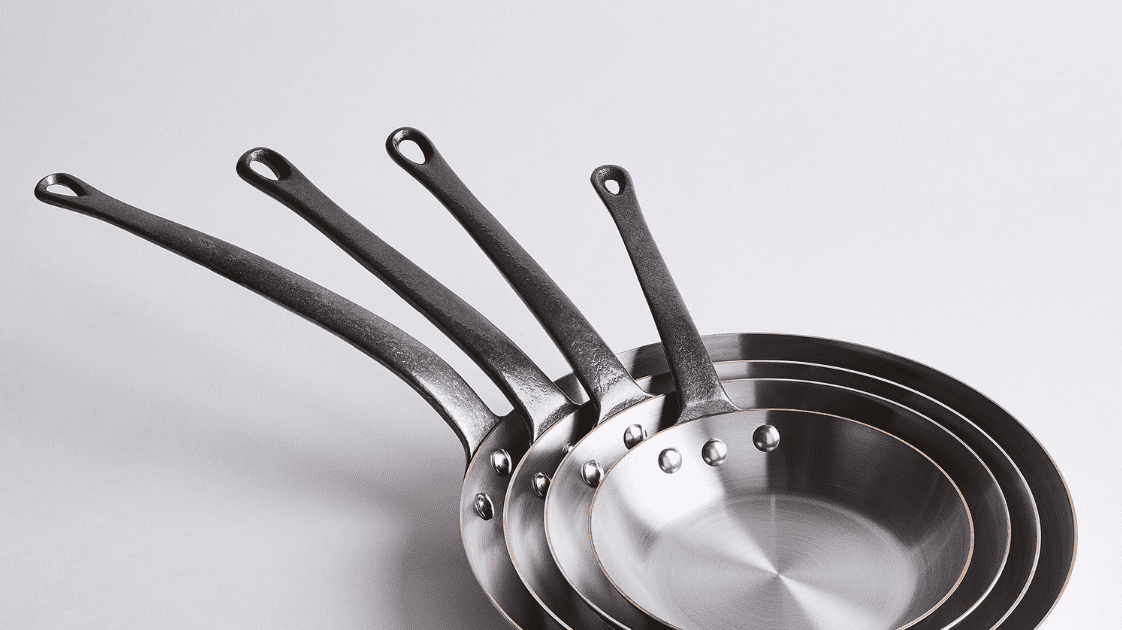
The size of pans can also be an indicator of their capacity. The capacity of a frying pan is simply how much it can do, its maximum capability. The maximum capacity of a container refers to how much it can hold when filled to the brim, or its edge-high filling.
So, let’s say that you are cooking up some fried chicken in a pan that measures 3 liters. Then, you fill the pan with 1.5 liters of oil and fry a kilogram of meat. This causes the oil level to rise, bringing it close to the edge of the pan, but not overflowing. Does this mean the pan measurement is 1.5 liters instead? No, it is still a 3-liter frying pan.
Frying Pan Sizes and Benefits
An 8-inch frying pan
8 inches is among the smaller sizes of frying pans. This smaller pan allows for a quicker achievement of a high temperature. This is because of the collateral heat exposure from the sides of the pan, which, in this case, are closer to each other.
An 8-inch pan is also capable of more evenly distributing heat. Some of the usual foods you can fry and cook in pans of this size are 1 fried egg, 3-5 slices of bacon, chicken breast, sauteed vegetables for a side dish, and fluffy omelettes, as the egg will be forced to rise and cook upward because of the smaller cooking surface.
10 inch frying pan
Bigger pans are equivalent to more food cooked at once. Pans in these sizes allow for more ingredients without “overcrowding” the ingredients and thus, slowing down and bringing the quality of the meal down. These pans are typically large enough to accommodate frying three eggs, two chicken breasts, reheating leftovers, sautéing large amounts of vegetables, latkes, and other dishes.
12 inch frying pans
The more the frying pan increases in size, the greater the heat capability it has. It’s the kind of frying you need when cooking larger amounts of food. This size is usually used in cooking large batches of food, like four eggs, bacon strips (longer), three chicken breasts, pan pizzas, and many more.
FAQs about Frying Pans
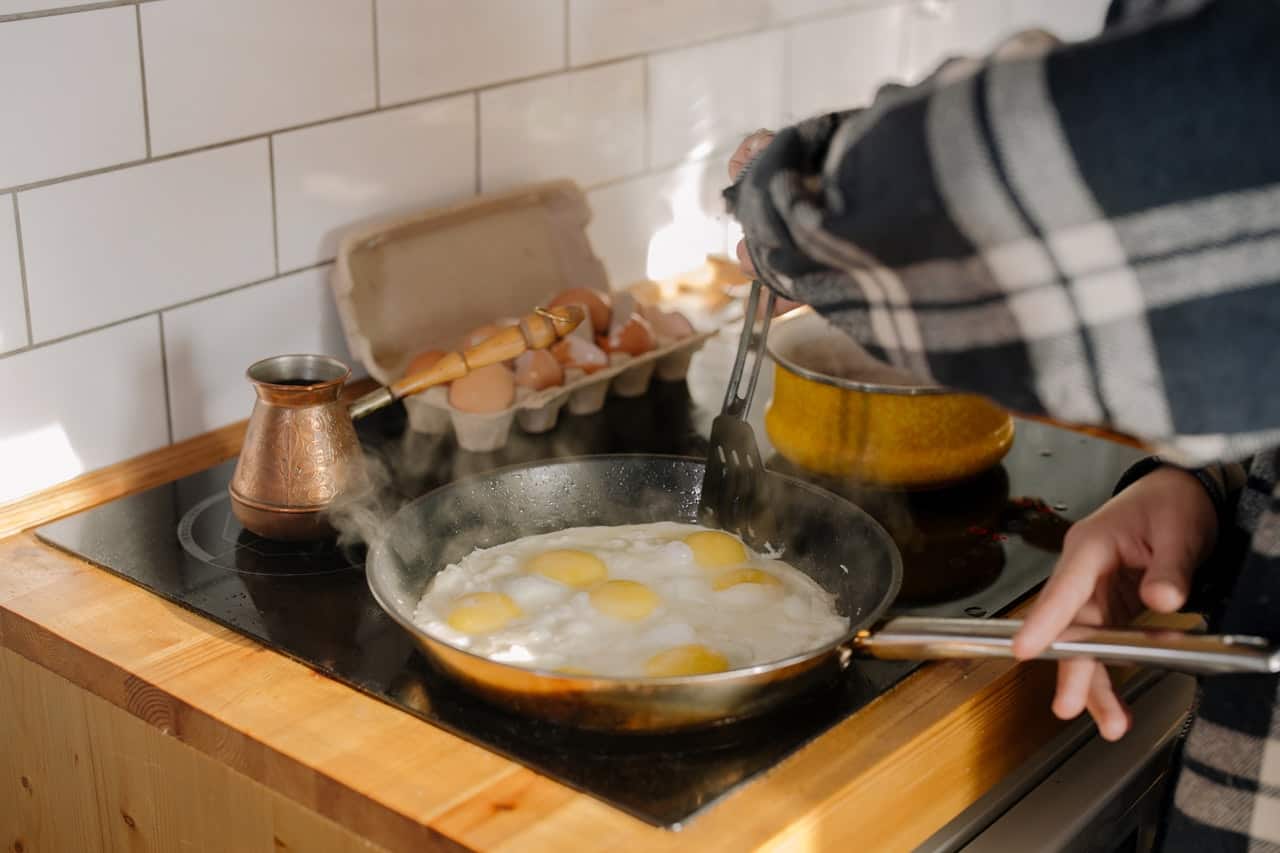
What size is the best size to fit my needs?
Well, before anything else, you need to determine what you are going to use it for. One of the important things about frying ingredients is overcrowding. In frying, you need the heat to be evenly distributed, and overcrowding is a great hindrance to this. So, when you choose a frying pan, consider the amount of what you are about to cook in it.
What is the standard size of frying pans in the UK?
For small frying pans, the standard sizes are 20 and 24 cm. For medium frying pans, you have the 26 and 28 cm pans, and lastly, for the large ones, 30 cm.
What is the most important material to look at material or size?
The first thing you need to think about is how much it would impact your needs. How much change would it bring to the kitchen if you chose the material first, or if you go with prioritizing size?
More often than not, the factor that makes the biggest difference is the frying pan’s material. So usually, people start the purchase process by looking up and deciding on the material before looking for a specific size of the said material. The usual difference brought by size is almost always about the amount of food to be cooked in it, while materials go beyond the amount.
Summary
Shopping for cooking tools and equipment can be quite challenging, and nowadays, it’s even harder to do with all the restrictions. As such, especially when buying online, it’s crucial to understand how to measure a frying pan would be essential. It’s important to know what size you need and make sure it fits the product description to avoid the hassle.
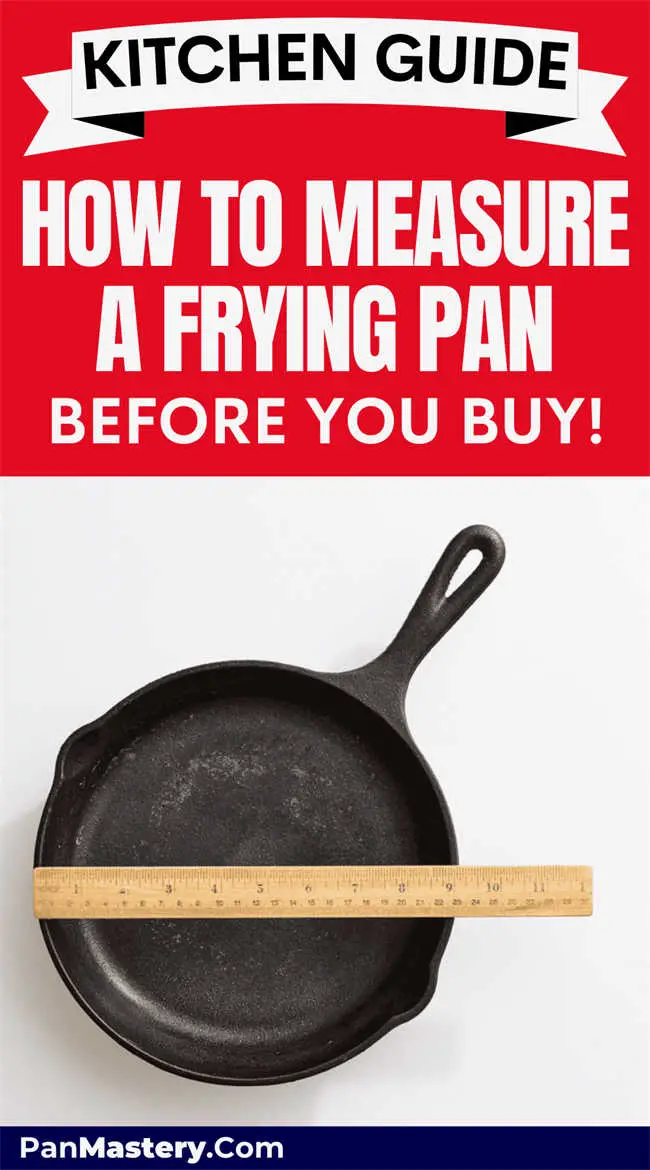

Michael Johnson is the founder of Pan Mastery, Inspired by his blacksmith grandfather’s legacy has a deep appreciation for hand-crafted pots and pans, he provides invaluable guides, reviews, and recipes to enhance your culinary journey.
